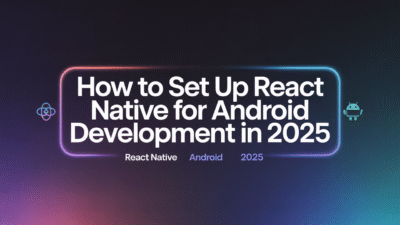When it comes to developing mobile applications for Android, developers and businesses often face a critical decision: whether to use Flutter or stick with Native Android development. Both approaches have their unique strengths and weaknesses, and understanding these can help you make an informed choice based on your project’s requirements.
What is Flutter?
Flutter is Google’s open-source UI software development kit (SDK) that allows developers to build natively compiled applications for mobile, web, and desktop from a single codebase . Using the Dart programming language, Flutter enables cross-platform app development, meaning one application can run seamlessly on both Android and iOS platforms.
What is Native Android Development?
Native Android development involves building apps specifically for the Android platform using languages like Java or Kotlin. These apps are designed to take full advantage of the operating system’s features and capabilities, offering high performance and a more authentic user experience .
Key Differences Between Flutter and Native Android
1. Development Speed and Cost
One of the primary advantages of Flutter is its ability to accelerate the development process. Since it allows code reuse across platforms, developers can create apps faster and at a lower cost compared to native development . On the other hand, native development typically requires separate codebases for Android and iOS, which can increase both time and expenses.
2. Performance
While Flutter apps are known for their smooth performance, native apps generally offer superior speed and responsiveness. This is because native apps are built specifically for the platform they run on, allowing them to leverage the full power of the device’s hardware and OS-specific optimizations .
3. User Experience (UX)
Native apps tend to provide a more polished and intuitive user experience since they adhere strictly to the platform’s design guidelines and conventions. Flutter, however, uses its own rendering engine, which can sometimes lead to inconsistencies in how the app looks and feels across different devices .
4. Access to Platform-Specific Features
Native development offers deeper integration with platform-specific features such as camera, GPS, and sensors. While Flutter has made significant strides in this area, there may still be instances where certain advanced functionalities are not readily available or require additional plugins .
5. Community and Ecosystem
Both Flutter and native development have robust communities and ecosystems. However, native development benefits from years of established practices and a vast array of resources. Flutter, being relatively newer, has a growing community but might lack some of the depth found in native ecosystems .
When to Choose Flutter
- Cross-Platform Needs: If your goal is to deploy your app on both Android and iOS without maintaining separate codebases, Flutter is an excellent choice .
- Rapid Prototyping: For startups and businesses looking to launch MVPs quickly, Flutter’s hot-reload feature and single codebase can significantly speed up the development cycle .
- Consistent Design: If maintaining a uniform look and feel across platforms is crucial, Flutter’s customizable widgets make this easier to achieve .
When to Choose Native Android
- High Performance Requirements: Applications that demand high performance, such as games or real-time data processing tools, benefit most from native development .
- Complex Features: Apps requiring deep integration with device hardware or OS-specific features often perform better when developed natively .
- Long-Term Maintenance: For projects expecting long-term maintenance and updates, the maturity and stability of native development tools can be advantageous .
Conclusion
Choosing between Flutter and Native Android development ultimately depends on your project’s specific needs, budget, timeline, and target audience. If cross-platform compatibility, rapid development, and consistent design are priorities, Flutter might be the right choice. However, if performance and access to platform-specific features are paramount, native development could be the way to go. Evaluating these factors carefully will help ensure that your app meets its goals effectively and efficiently .


